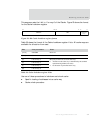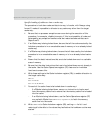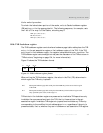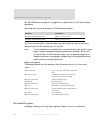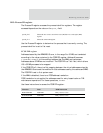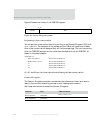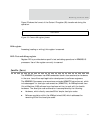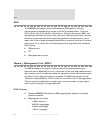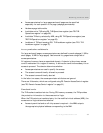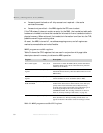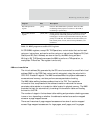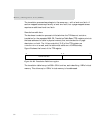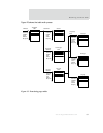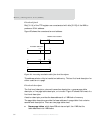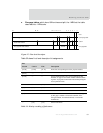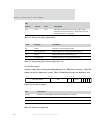
www.digiembedded.com
79
Working with the CPU
Access permissions for large pages and small pages can be specified
separately for each quarter of the page (subpage permissions).
Hardware page table walks.
Invalidate entire TLB using R8: TLB Operations register (see "R8:TLB
Operations register" on page 68).
Invalidate TLB entry selected by MVA, using R8: TLB Operations register (see
"R8:TLB Operations register" on page 68).
Lockdown of TLB entries using R10: TLB Lockdown register (see "R10: TLB
Lockdown register" on page 73).
Access permissions and domains
For large and small pages, access permissions are defined for each subpage (1 KB for
small pages, 16 KB for large pages). Sections and tiny pages have a single set of
access permissions.
All regions of memory have an associated domain. A domain is the primary access
control mechanism for a region of memory. It defines the conditions necessary for an
access to proceed. The domain determines whether:
Access permissions are used to qualify the access.
The access is unconditionally allowed to proceed.
The access is unconditionally aborted.
In the latter two cases, the access permission attributes are ignored.
There are 16 domains, which are configured using R3: Domain Access Control register
(see "R3: Domain Access Control register" on page 61).
Translated entries
The TLB caches translated entries. During CPU memory accesses, the TLB provides
the protection information to the access control logic.
When the TLB contains a translated entry for the modified virtual address (MVA), the
access control logic determines whether:
Access is permitted and an off-chip access is required — the MMU outputs
the appropriate physical address corresponding to the MVA.



